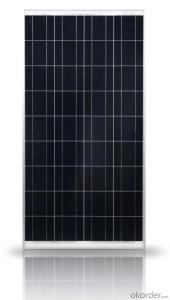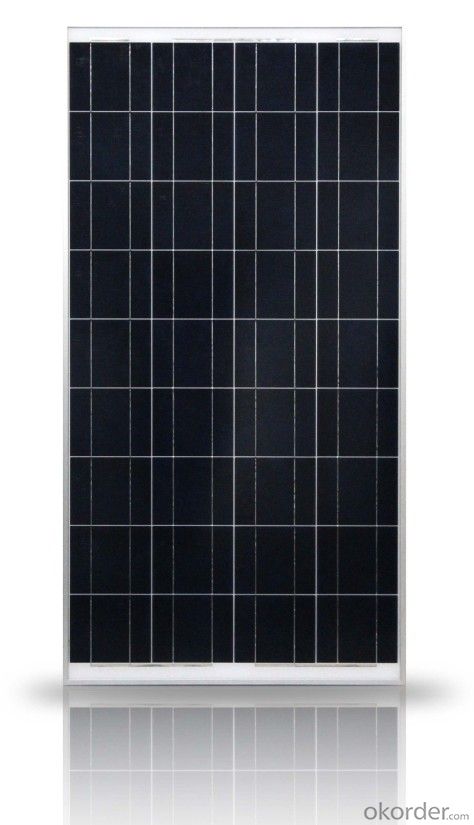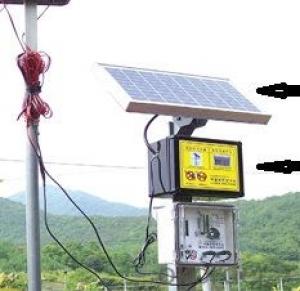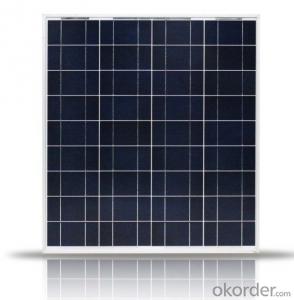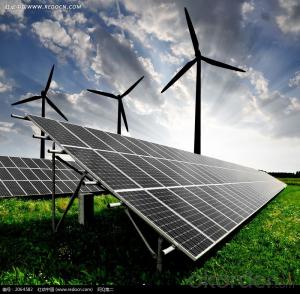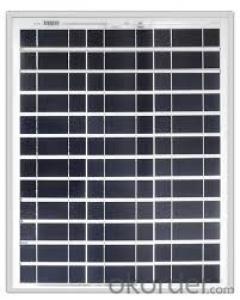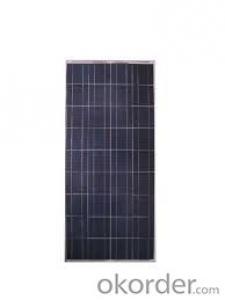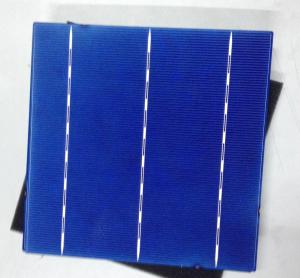Factory Direct Sale Poly Solar Panel with 25 Years Warranty CNBM - Solar Cells South Africa
- Loading Port:
- Qingdao
- Payment Terms:
- TT OR LC
- Min Order Qty:
- 10 set
- Supply Capability:
- 300000 set/month
OKorder Service Pledge
OKorder Financial Service
You Might Also Like
Polycrystalline Solar Modules
CNBM offers a range of small, medium and large polycrystalline solar modules, designed for a range of requirements.
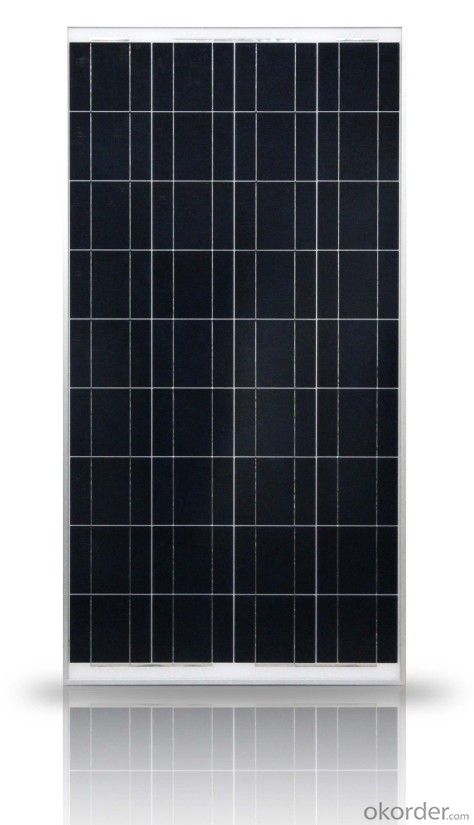
Specifications:
Tolerance | +/-3% |
Cell | Polycrystalline silicon solar cells (156 x 156mm) |
N0. of Cells | 60 (10 x 6) |
Dimension of Modules (mm) | 1650 x 990 x 40 |
Weight (kg) | 25.5 |
Limits:
Operating Temperature | -40~+85? |
Storage Temperature | -40~+85? |
Maximum System Voltage | 1000 VDC max. |
Hail Impact | Diameter of 28mm with impact speed |
Temperature and Coefficients:
NOCT | 48C+/-2? |
Voltage temperature coefficient (%/K) | -0.35 |
Current temperature coefficient (%/K) | 0.05 |
Power temperature coefficient (%/K) | -0.45 |
Characteristics:
Model: | SGM-200P | SGM-210P | SGM-220P |
Max-power voltage Vmp (V) | 29.2 | 29.4 | 29.41 |
Max-power current Imp (A) | 6.85 | 7.14 | 7.48 |
Open-circuit voltage Voc (V) | 36.5 | 36.69 | 36.9 |
Short-Circuit Current Isc (A) | 7.28 | 7.6 | 7.93 |
Max-power Pm(W) | 200 | 210 | 220 |
Model: | SGM-230P |
Max-power voltage Vmp (V) | 29.8 |
Max-power current Imp (A) | 7.72 |
Open-circuit voltage Voc (V) | 37.31 |
Short-Circuit Current Isc (A) | 8.19 |
Max-power Pm(W) | 230 |
STC: Irradiance 1000W/m2, module temperature 25?, AM-=1.5
Poly Crystalline Solar Panels Specifications Range
Maximum Power (Pm) | Dimension | Weight | Operating Voltage (Vmp) | Operating Current (Imp) | Open Circuit Voltage (Voc) | Short Circuit Current (Isc) |
0.45W | 140x80x10mm | 0.08kg | 3.3V | 150mA | 4.6V | 160mA |
1.0W | 162x140x10mm | 0.16kg | 7.5V | 150mA | 10.3V | 160mA |
4.5W | 269x251x23mm | 0.8kg | 16.5V | 0.27A | 20.5V | 0.3A |
10W | 420.1×268.9×22.6mm | 1.92kg | 17.5V | 0.58A | 20.5V | 0.6A |
20W | 425x502x50mm | 3.0kg | 16.8V | 1.19A | 21.0V | 1.29A |
30W | 593x502x22.6mm | 3.9kg | 16.8V | 1.78A | 21.0V | 1.94A |
40W | 655x537x50mm | 5.75kg | 17.3V | 2.31A | 22.1V | 2.54A |
50W | 839x537x50mm | 6.0kg | 17.5V | 2.9A | 21.8V | 3.17A |
65W | 1111x502x50mm | 7.2kg | 17.6V | 3.69A | 22.1V | 3.99A |
80W | 1204x537x50mm | 7.7kg | 17.6V | 4.55A | 22.1V | 4.8A |
- Q: How long does it take to install solar cells on a rooftop?
- The time required to install solar cells on a rooftop can vary depending on various factors such as the size of the system, the complexity of the installation, and the number of installers working on the project. On average, a residential rooftop solar installation can typically take anywhere from one to three days to complete. However, larger commercial or industrial installations may take longer, ranging from a few weeks to several months. It's always best to consult with a professional solar installer who can provide a more accurate estimate based on the specific project requirements.
- Q: How much energy can a solar cell generate?
- The amount of energy a solar cell can generate depends on various factors such as its size, efficiency, and the amount of sunlight it receives. On average, a solar cell can generate anywhere from a few watts to several hundred watts of power.
- Q: Can solar cells be used in electric bikes or scooters?
- Yes, solar cells can be used in electric bikes or scooters. They can be integrated into the design of these vehicles to harness solar energy and supplement their charging systems. This enables them to recharge the battery and extend their overall range, making them more energy-efficient and sustainable transportation options.
- Q: How do solar cells perform in areas with high levels of wildfire smoke?
- Solar cells can experience a decrease in performance in areas with high levels of wildfire smoke due to reduced sunlight reaching the surface. The smoke particles in the air can scatter and absorb sunlight, resulting in lower energy production. Additionally, the deposition of ash and soot on the solar panels can further reduce their efficiency. Regular cleaning and maintenance can help mitigate these effects to some extent.
- Q: Can solar cells be used to power remote transportation systems?
- Yes, solar cells can be used to power remote transportation systems. Solar cells convert sunlight into electricity, which can be stored in batteries and used to power vehicles, such as electric cars, bikes, boats, or even small aircraft. This makes solar energy an environmentally friendly and sustainable option for powering transportation in remote areas where access to conventional power sources may be limited or non-existent.
- Q: Can solar cells be used to charge electric vehicles?
- Yes, solar cells can be used to charge electric vehicles. Solar panels can be installed on the roof or other surfaces of an electric vehicle to generate electricity from sunlight. This electricity can then be used to charge the vehicle's battery, providing a renewable and sustainable source of energy.
- Q: How do solar cells contribute to reducing carbon emissions?
- Solar cells contribute to reducing carbon emissions by converting sunlight directly into electricity without any emissions of greenhouse gases. This renewable energy source replaces the need for fossil fuel-based power generation, which is a major contributor to carbon emissions. By harnessing the power of the sun, solar cells provide a clean and sustainable energy solution, helping to mitigate climate change and reduce the carbon footprint of our energy systems.
- Q: Can solar cells be used in water purification systems?
- Yes, solar cells can be used in water purification systems. Solar-powered water purification systems utilize solar energy to power the required processes, such as filtration, disinfection, and desalination. Solar cells can generate electricity from sunlight, which can be used to power pumps, UV lamps, or other components of the water purification system. This sustainable and environmentally friendly approach is particularly useful in areas with limited access to electricity or in off-grid locations.
- Q: What is the role of solar cells in powering electric vehicles?
- Solar cells play a crucial role in powering electric vehicles by harnessing sunlight and converting it into electricity. They are typically installed on the roof of the vehicle, or integrated into its body, and generate renewable energy which can be used to charge the vehicle's battery. While solar power alone may not be sufficient to fully power an electric vehicle, it can significantly extend its range and reduce the reliance on grid electricity. Additionally, solar cells provide a sustainable and environmentally friendly solution, contributing to the overall goal of reducing carbon emissions and promoting clean energy transportation.
- Q: Can solar cells be used in electric vehicle charging stations?
- Yes, solar cells can be used in electric vehicle charging stations. Solar panels can capture sunlight and convert it into electricity, which can then be used to charge electric vehicles. This approach is known as solar-powered charging stations and is an environmentally friendly alternative to traditional grid-powered stations.
Send your message to us
Factory Direct Sale Poly Solar Panel with 25 Years Warranty CNBM - Solar Cells South Africa
- Loading Port:
- Qingdao
- Payment Terms:
- TT OR LC
- Min Order Qty:
- 10 set
- Supply Capability:
- 300000 set/month
OKorder Service Pledge
OKorder Financial Service
Similar products
Hot products
Hot Searches
Related keywords
